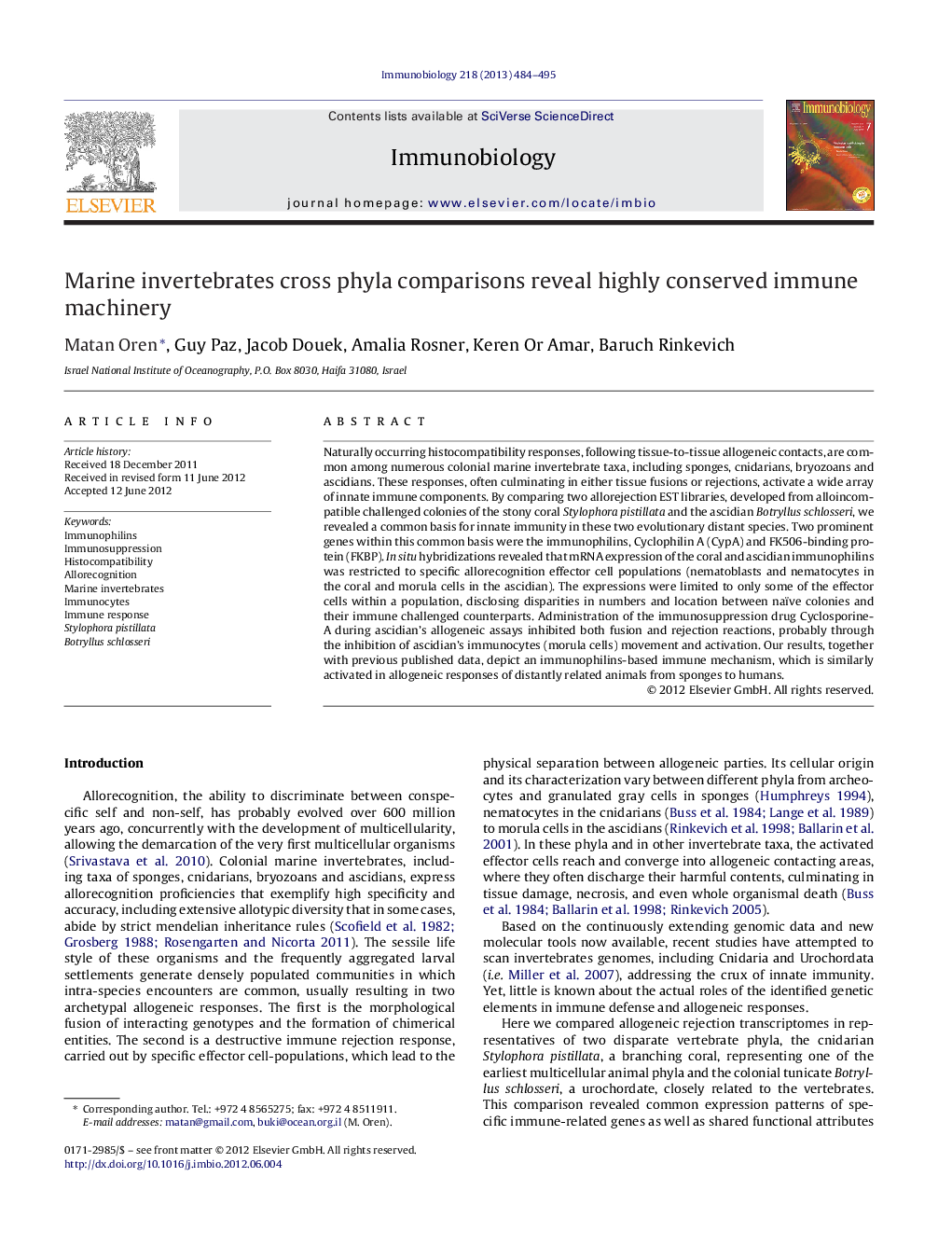| Article ID | Journal | Published Year | Pages | File Type |
|---|---|---|---|---|
| 10941019 | Immunobiology | 2013 | 12 Pages |
Abstract
Naturally occurring histocompatibility responses, following tissue-to-tissue allogeneic contacts, are common among numerous colonial marine invertebrate taxa, including sponges, cnidarians, bryozoans and ascidians. These responses, often culminating in either tissue fusions or rejections, activate a wide array of innate immune components. By comparing two allorejection EST libraries, developed from alloincompatible challenged colonies of the stony coral Stylophora pistillata and the ascidian Botryllus schlosseri, we revealed a common basis for innate immunity in these two evolutionary distant species. Two prominent genes within this common basis were the immunophilins, Cyclophilin A (CypA) and FK506-binding protein (FKBP). In situ hybridizations revealed that mRNA expression of the coral and ascidian immunophilins was restricted to specific allorecognition effector cell populations (nematoblasts and nematocytes in the coral and morula cells in the ascidian). The expressions were limited to only some of the effector cells within a population, disclosing disparities in numbers and location between naïve colonies and their immune challenged counterparts. Administration of the immunosuppression drug Cyclosporine-A during ascidian's allogeneic assays inhibited both fusion and rejection reactions, probably through the inhibition of ascidian's immunocytes (morula cells) movement and activation. Our results, together with previous published data, depict an immunophilins-based immune mechanism, which is similarly activated in allogeneic responses of distantly related animals from sponges to humans.
Keywords
Related Topics
Life Sciences
Biochemistry, Genetics and Molecular Biology
Cell Biology
Authors
Matan Oren, Guy Paz, Jacob Douek, Amalia Rosner, Keren Or Amar, Baruch Rinkevich,
